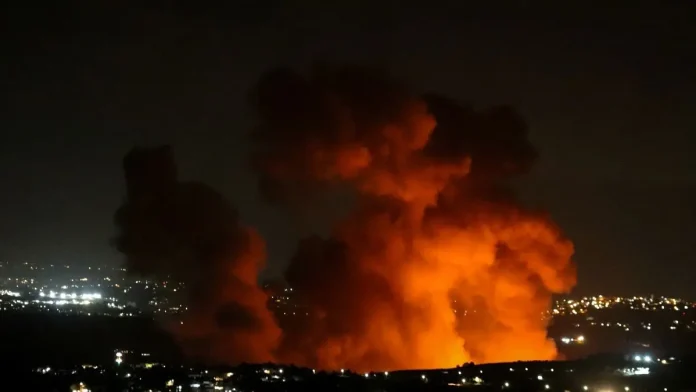Israel and Lebanon exchanged intense strikes on Sunday. The Israeli Air Force carried out the most intensive bombardment of southern Lebanon in nearly a year of war with Hamas, while Hezbollah claimed responsibility for rocket attacks on military targets in northern Israel.
The Israeli military struck 290 targets, including thousands of Hezbollah rocket launchers. The military command of the country said it will continue to strike targets of the Iranian-backed movement.
Apart from that, the Israeli military said some 85 rockets were fired from Lebanon into northern Israel between 6 a.m. and 7 a.m. local time on Sunday. The military reported that sirens sounded throughout the night and numerous rockets and missiles fired from Lebanon and Iraq, most of which were intercepted by Israeli air defence systems.
Several buildings suffered direct or indirect damage from falling rocket debris as a result of the attack, but there were no serious casualties, according to Israeli media. Rear Admiral Daniel Hagari announced updated security regulations for areas north of Haifa, including limits on gatherings of 30 people in open spaces and 300 people indoors. Work and study can continue if people can get to protected areas quickly.
The consecutive rocket attacks launched by Hezbollah on Ramat David are the heaviest strikes it has launched since the start of hostilities. The group said the strikes were in response to repeated Israeli attacks on Lebanon.
The exchange of strikes came less than 48 hours after the Israeli airstrike on Hezbollah commanders in a suburb of the Lebanese capital killed at least 37 people. 16 members of the Hezbollah group were among the dead, including senior leader Ibrahim Aqil and another commander Ahmed Wahbi.
Israel and Hezbollah have regularly exchanged fire since the Hamas attack on southern Israel on 7 October triggered a devastating Israeli military offensive in the Gaza Strip. Still, previous cross-border attacks have mostly hit areas in northern Israel that have undergone evacuations and less populated parts of southern Lebanon.
